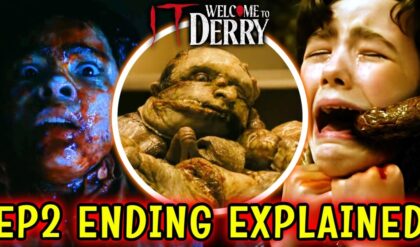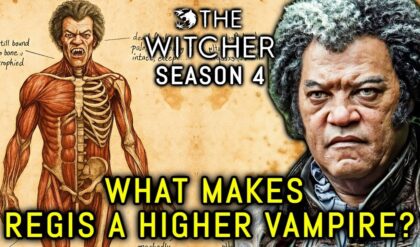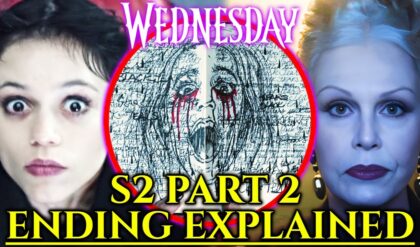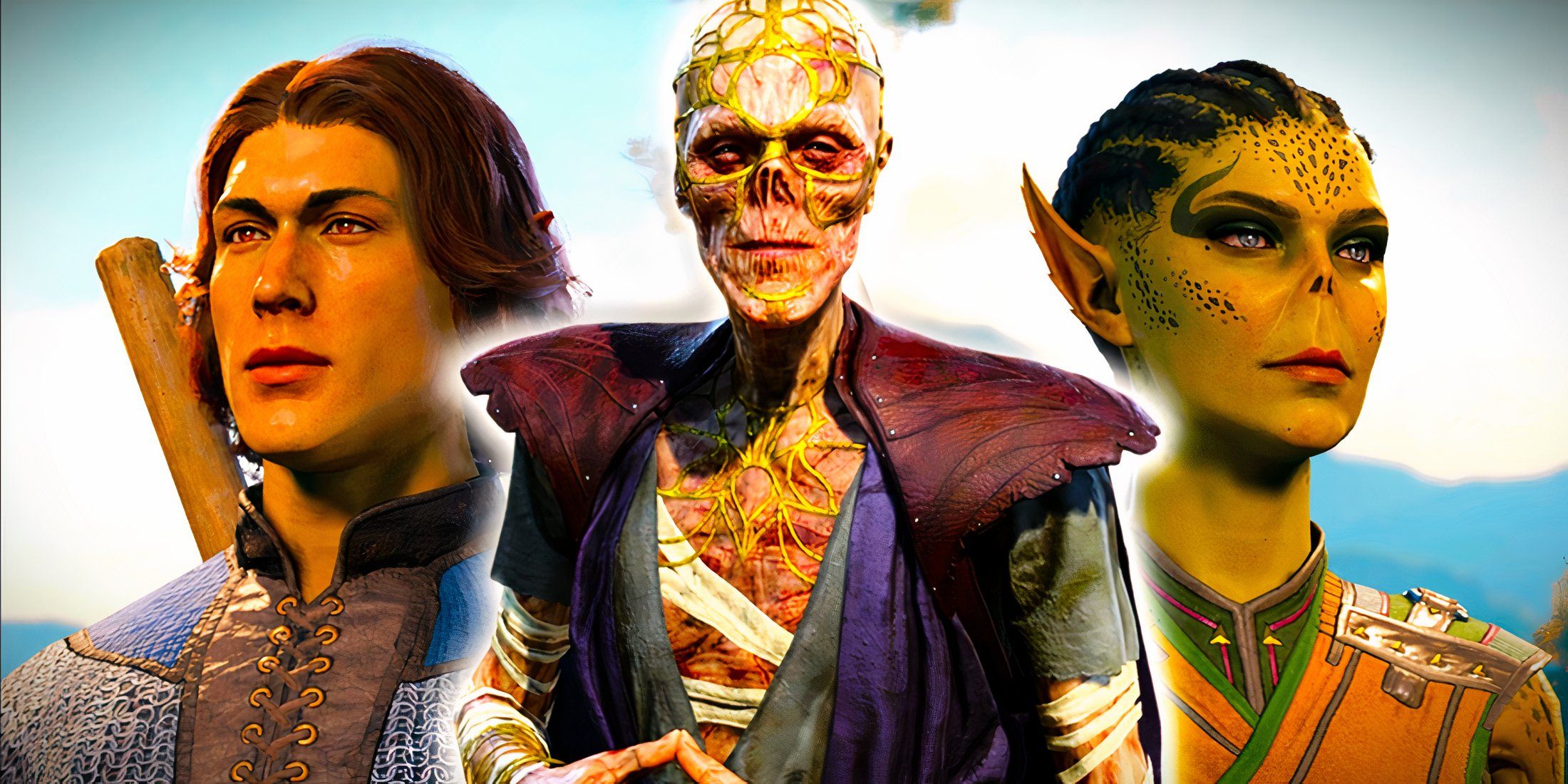
The characters of Baldur’s Gate 3 are interconnected with many areas of the main plot, or the world of Dungeons & Dragons‘ Forgotten Realms in general. At the start of the game, Karlach is ripped from the frontlines of the Blood War, and Gale was the chosen of the goddess of magic. But it’s not just the main companions who can show players something about the world of Faerûn.
Hirelings are a lesser-utilized mechanic in Baldur’s Gate 3. They’re not necessary for anything in the game, and their main purpose is generally to make the game a little bit more convenient for the player. However, even these extremely minor characters that don’t even have real, discernible personalities of their own are able to link into the overarching storyline.
Hirelings Are Dead People Who Were Re-Animated By Withers
Withers’ Method Of Recruitment Is A Bit Unconventional
In Baldur’s Gate 3, hirelings can be called forth to take up a companion slot. Players have found several uses for hirelings, including being permanent buffers so that their actual party won’t have to use up spell slots, replacements for companions who may have left the party, and as a way to dodge companion disapproval. This means that a lot of players won’t have any need for hirelings – only 17.9% of players have earned the Steam achievement Outsourcing, which is gained after recruiting a hireling.
Every hireling has a backstory which involves them being killed by worshipers of the Absolute – a few of them were even followers themselves, but this evidently didn’t protect them. There are several instances inside and outside the game where Withers’s real identity is implied to actually be Jergal, Faerûn’s original god of death. Jergal is no stranger to undeath, and Dungeons & Dragons even has Death domain clerics, which is a subclass heavily focused on necromancy and otherwise necrotic spells. Every hireling that can be summoned by Withers is a re-animated vessel who died before the story began.
Jergal is known as the Scribe of the Dead. If the player asks Withers about himself, he will describe himself as a “humble scribe.” Judging by this, his language choices that imply he is possibly ancient, and his undead appearance, many have connected the dots to believe Withers is actually the retired god himself.
Though hirelings can fill in for Tav on the rare occasions where they speak, or companion banter, if a player talks to them, it becomes clear that it is not the hireling they are speaking to – but Withers. As shown in a video by user Ferzen on YouTube, his manner of speaking is so unmistakable that the player can call him out for it. Though players know through his revival services that he can raise the dead by “striking their names from the archives,” he won’t properly resurrect the hirelings and only uses them as a means to aid the player.
Zenith Feur’sel Is The Son Of A Baldur’s Gate 1 Companion
Baldur’s Gate 3 Repeatedly References Xan From The First Baldur’s Gate Game
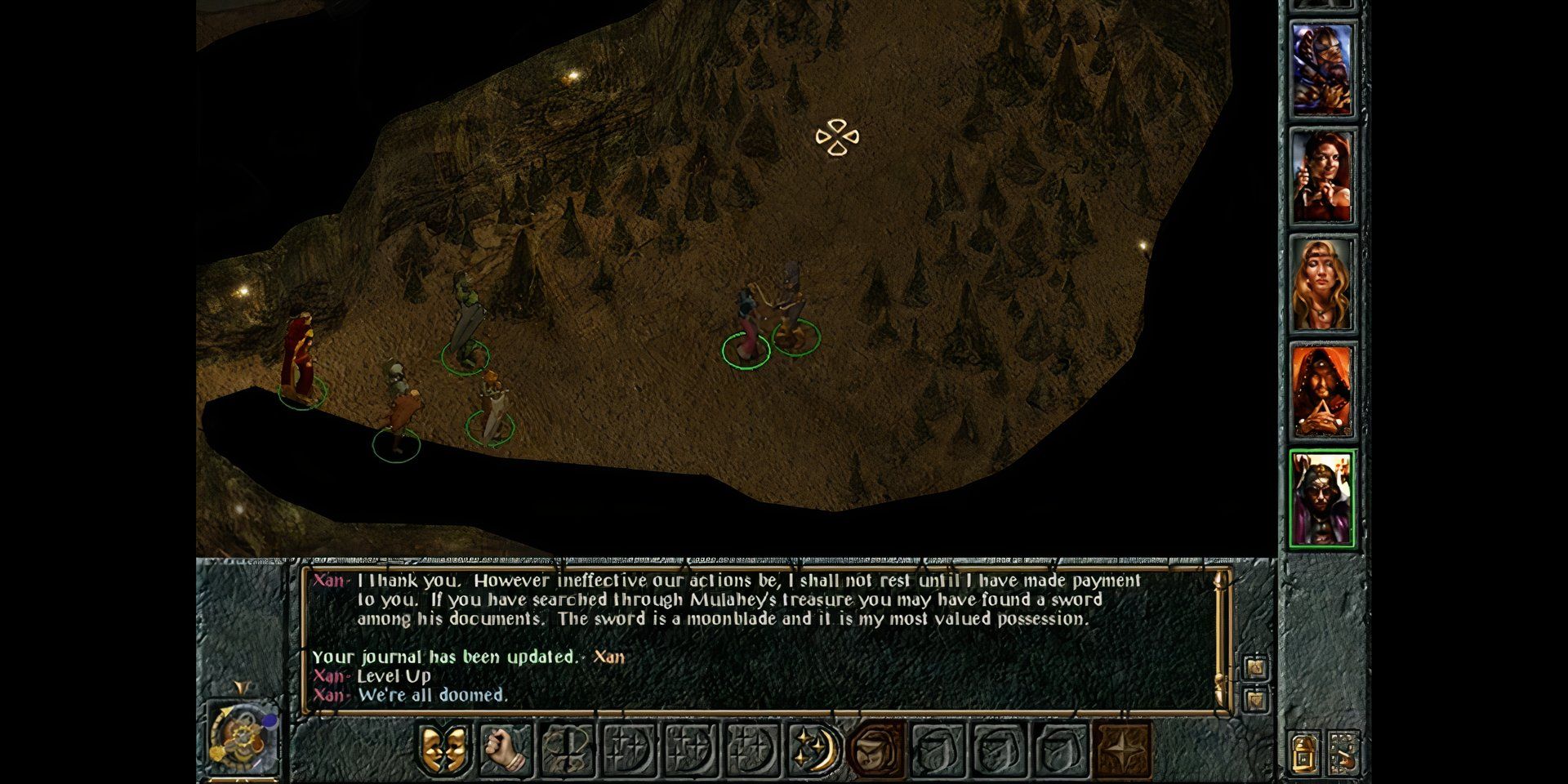
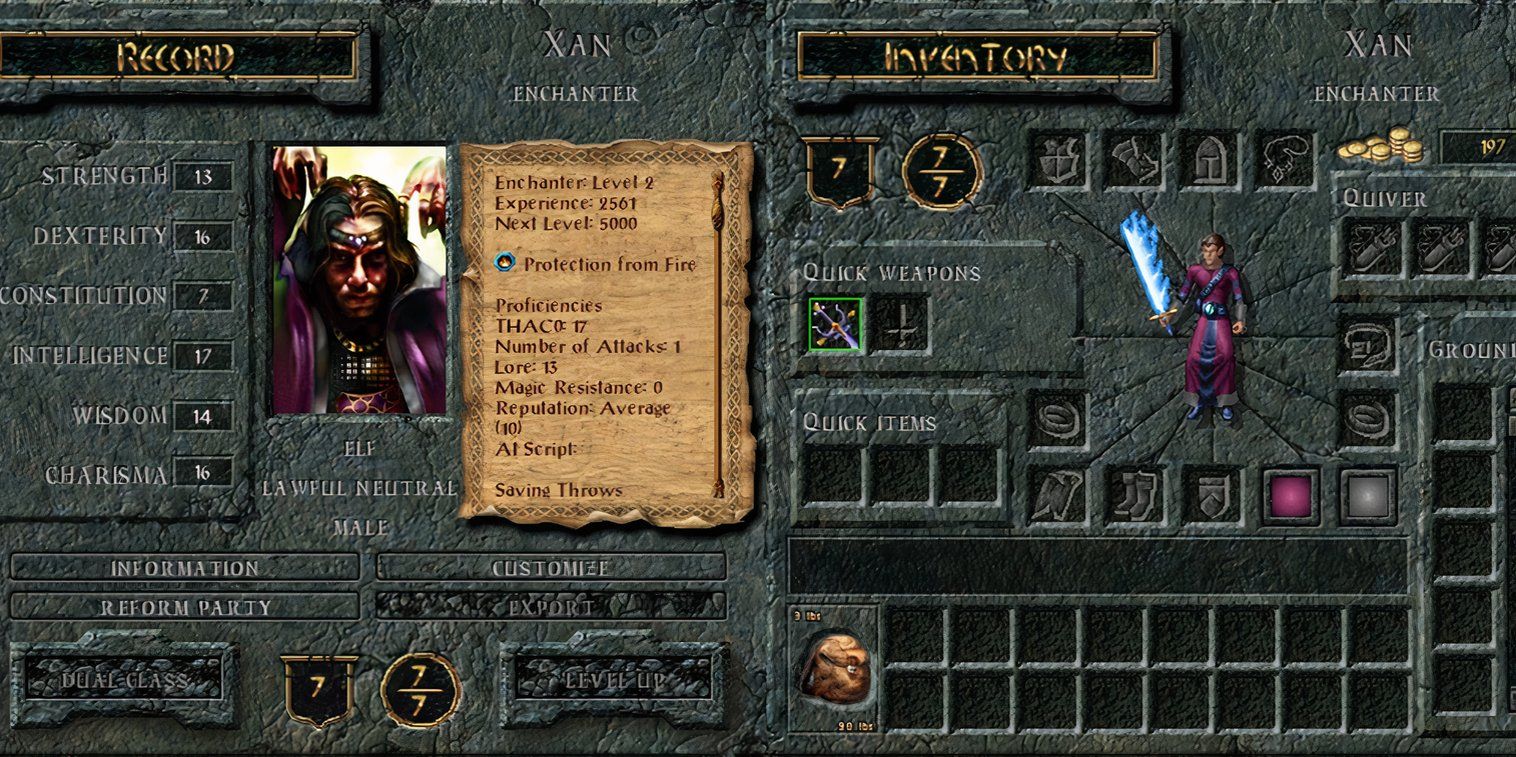
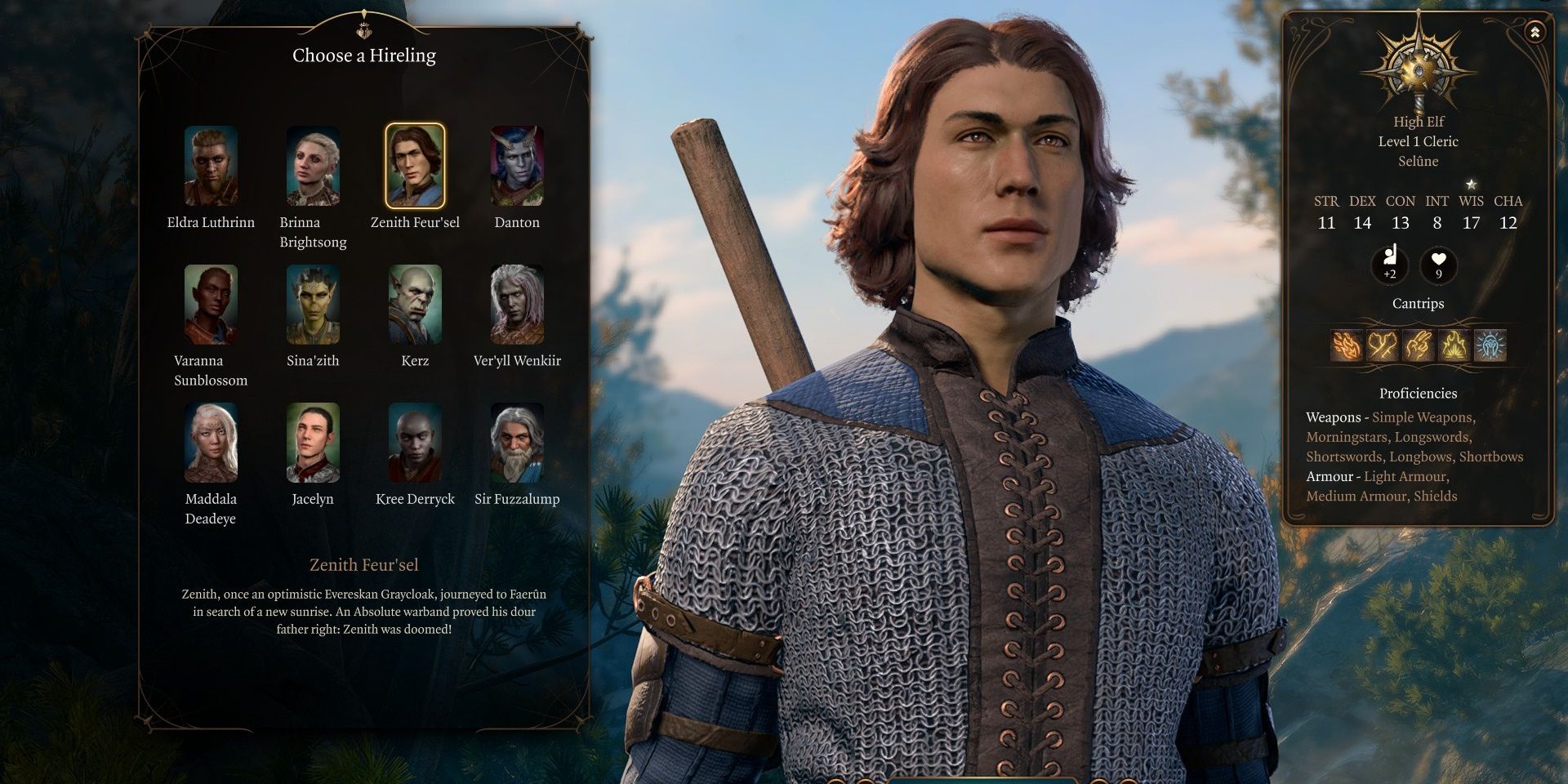
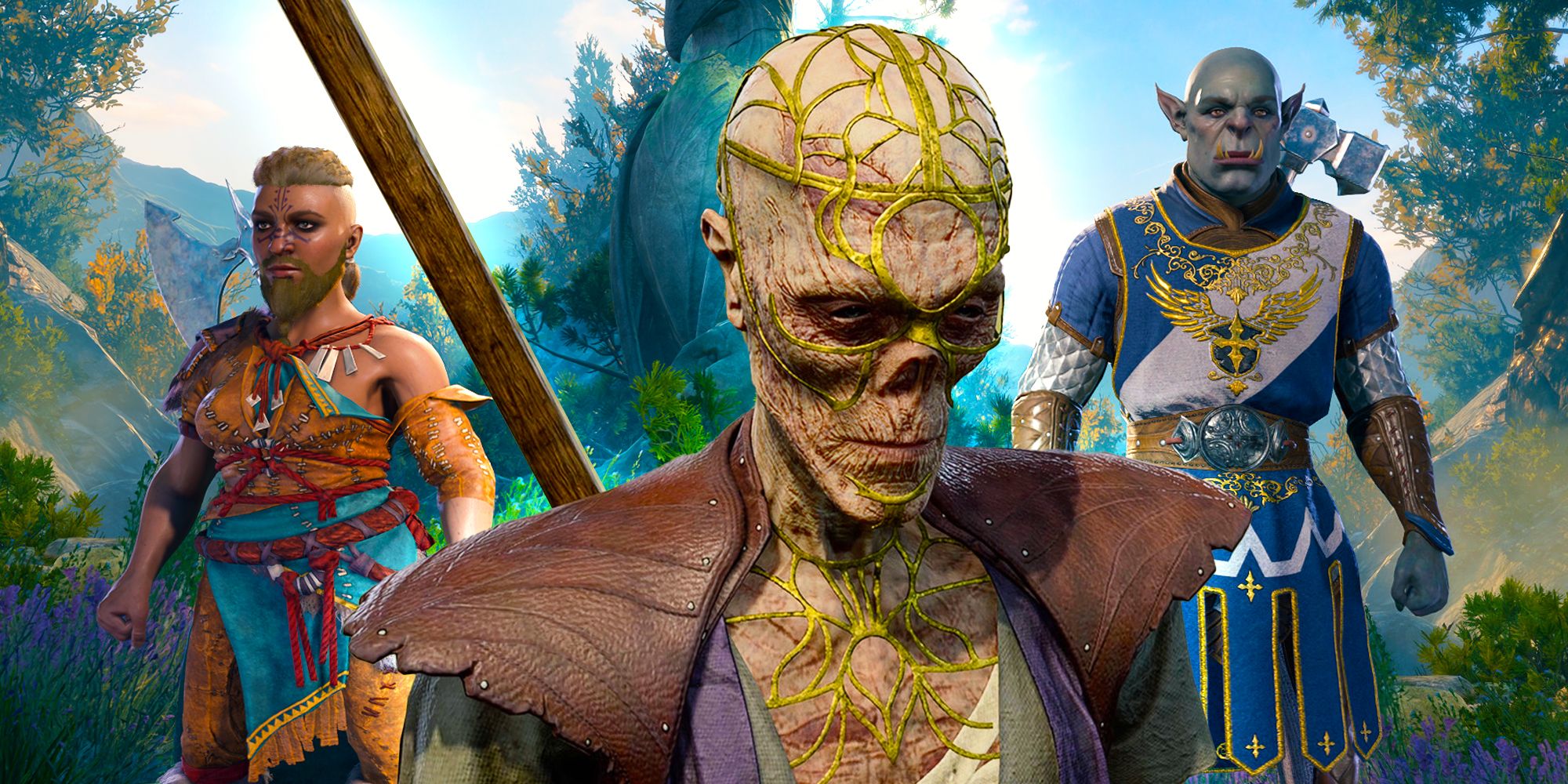
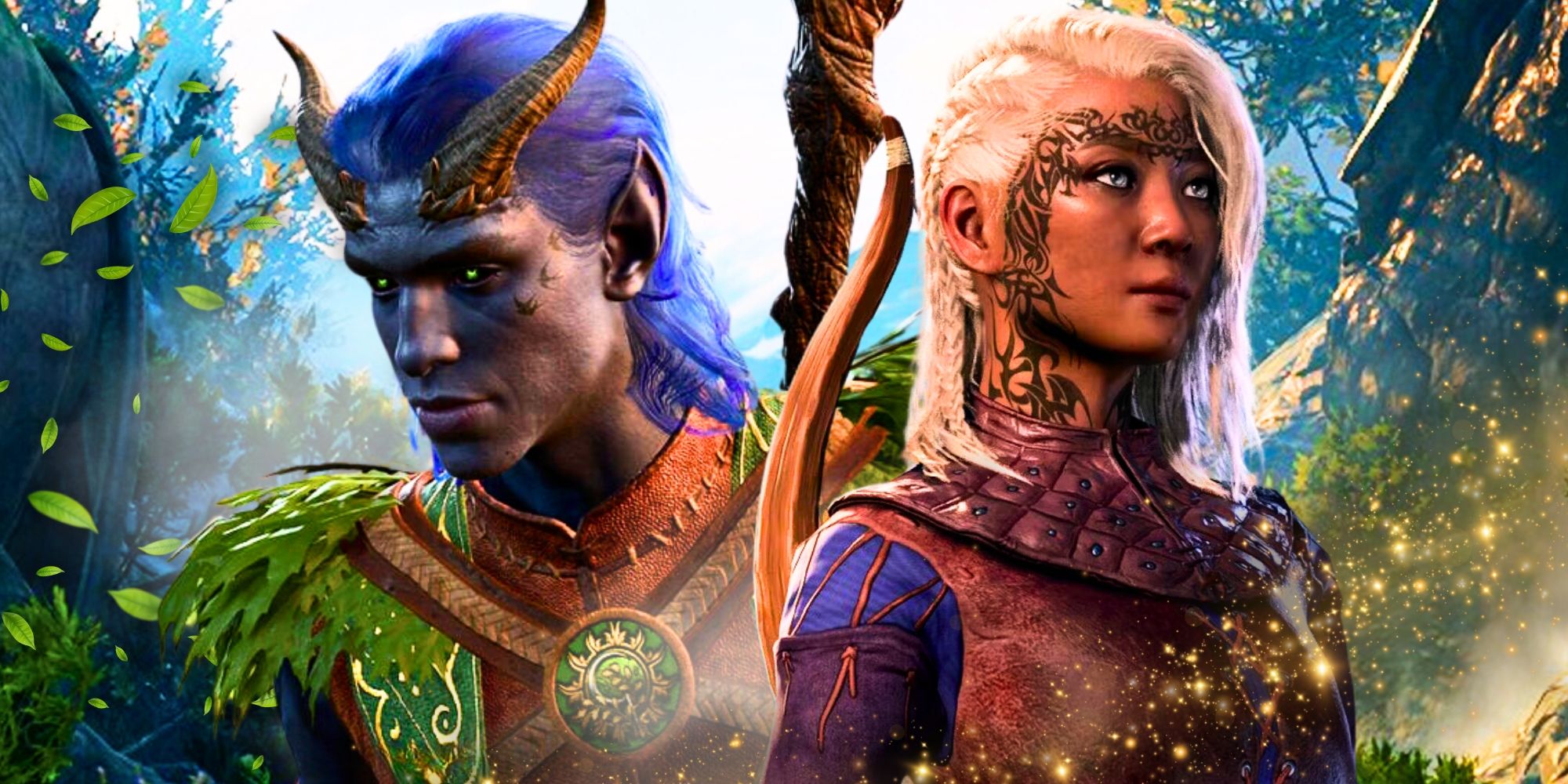





A reference that may be lost to anyone who is unfamiliar with the previous Baldur’s Gate games can be found in the description of one of the hirelings, Zenith Feur’sel, a High Elf cleric of Selune who defaults to the Light domain. It reads, “Zenith, once an optimistic Evereskan Graycloak, journeyed to Faerûn in search of a new sunrise. An Absolute warband proved his dour father right: Zenith was doomed!” This is extremely reminiscent of the elven mage Xan from the first game, who was a Graycloak whose catchphrase was, “We’re all doomed!“
This is not the only reference to Xan from Baldur’s Gate 1 in the series’ third installment. If Lae’zel’s ending does not involve her being consumed by Vlaakith, and the player gave her the Githyanki egg from the Crèche in Act One, Lae’zel will tell the player that she is raising the hatchling herself and has named him Xan, meaning “Freedom.” If she is present as an Astral Projection, Lae’zel will note that she has left Xan in the care of the “mages of Xamvadi’m” – an interesting thing to mention, as the original Xan was also a mage.
The first rendition of the original Xan was a Gith fighter played by Ben Smedstad in the developer’s pen and paper sessions – but the character was tweaked for Baldur’s Gate. It’s likely that the gith the egg can hatch into is an homage to both renditions of the character. Though he’s not present in the same way as Minsc, Jaheria, and Viconia, the elven Xan still has somewhat of a presence in Baldur’s Gate 3. Jaheria can briefly talk about her experience with him, and he’s referenced directly as the main subject of the book One Night in Nashkel.
Sina’zith’s Backstory Shows The Opposite Side Of Gith Society That We Don’t See From Lae’zel
The Monk Hireling Shows The Hostile Nature Of The Gith
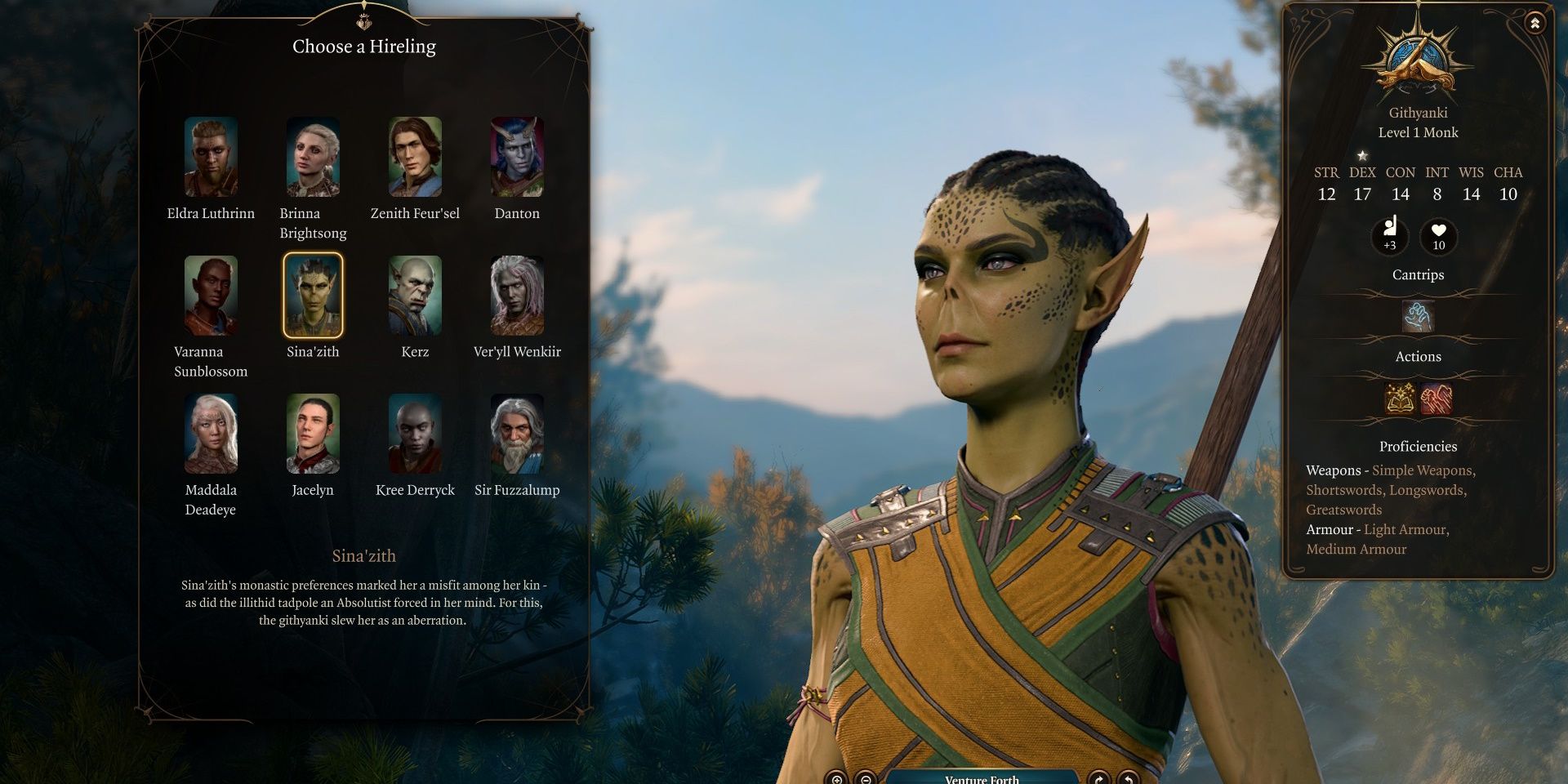
Sina’zith is a githyanki monk hireling. Though she isn’t directly connected to the plot of Baldur’s Gate like Zenith, her backstory is quite interesting because of what it tells the player about gith society. In Dungeons & Dragons, the Gith have two sub-cultures – the githyanki and githzerai. The thing that differentiates them is their approach to their illithid enemies – while the githyanki actively hunt mindflayers and seek to exterminate them, the githzerai prefer to focus on bettering their own society and recovering from being mindflayer servants.
In the short extract about Sina’zith, it states that “her monastic preferences marked her as a misfit among her kin – as did the illithid tadpole an Absolutist forced in her mind.” This links her to the overarching gith society, because it is usually the githzerai that prefer to take up monastic teachings and mannerisms. Ever since the two cultures split, the githyanki and githzerai have hated each other, and raised their hatchlings to condemn the ways of the others – which is likely why Sina’zith was such an outcast.
Players hear little of the githzerai in Baldur’s Gate 3, but it’s clear that the githyanki have a distain for anything that resembles them. Crèche Y’llek is located underneath what used to be Rosymorn Monastery, before the githyanki came through and slaughtered the monks. Though there are no unique interactions with the hirelings and other characters, it’s interesting to see a different side of gith society when Lae’zel embodies the ideals of the githyanki. It also might be a brief nod towards the idea that the two cultures aren’t that different after all, as they used to be united.
